Recognizing the Signs-Care for Your Aging Dog
Changes in dogs can be subtle, but, all of a sudden, out of the blue, you will notice them beginning to age. Early signs of aging include stiffness, sleeping deeper and longer, hazy eyes and irritability. Their coat and muzzle may start to turn gray and their physique, once trim and muscular, turns soft and flabby. They may be slowing down both mentally and physically. Their hearing, vision, mobility and mental sharpness will begin to decline. Their behavior is also changing. They are not as playful as they used to be, and they no longer seem as eager to go on their daily romps.Their immune system slows down too, making it more difficult to fight off injury and illness. Their skin may become more susceptible to disease and parasites. Aging in both humans and dogs is a bitch! At 10 years old, he has reached the stage in his lifespan that a human reaches at about age 65 or 70. As a responsible dog owner, you need to be aware of the impact that advanced age is likely to have on your pets physical condition and behavior. You should be prepared to provide the special care and comfort they need in order for their senior years to be happy and healthy.
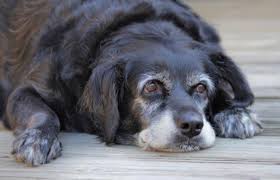 Maintain Regular Veterinary Check Ups
Maintain Regular Veterinary Check Ups
An older dog is more likely to develop illnesses and injuries and other age related health problems such as diabetes, kidney failure and arthritis. It is crucial to find a competent vet that you can trust and with whom you communicate well. Be vigilant regarding your dogs overall health. Discuss sudden changes in your dog’s physical and behavioral health, such as changes in appetite, urination or stool production, along with exercise intolerance, excessive weight loss, coughing and lumps and bumps. Check your dog out thoroughly every week or so to see if they are showing any suspicious signs such as a new lump or bump on their skin. If you spot something unusual, take your dog to see the veterinarian without delay. Take your dog at least once a year for a geriatric check up. The check up should include a hands on physical examination and discuss your dog’s history. The exam should include a blood count and a blood chemistry analysis. Depending on your dog’s history, he may want to perform an electrocardiogram to test for heart problems or a urinalysis to detect physical abnormalities.
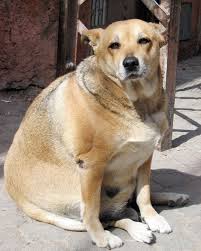 Keep Your Dog at A Healthy Weight
Keep Your Dog at A Healthy Weight
Obesity is one of the most common and debilitating diseases that are seen in older pets. Obese and overweight dogs are more vulnerable to illness such as heart disease, diabetes and arthritis.
Check your dogs body shape. Your dog should have a visible waistline and you should be able to feel his first 3 ribs. Your dog should not look like a stuffed sausage or pot bellied pig. Have your dog weighed on a regular basis and adjust his diet accordingly. Daily activity is a wonderful way to keep your senior in shape. Exercise is one of the best tools you have to maintain and improve your dog’s physical and mental health. Exercise your senior daily, but avoid doing so beyond the point of endurance. Excessive exercise in one day leads to generalized muscle soreness, stiffness and doesn’t allow the muscles to remain strong. You may have to adjust your dogs daily routine to meet their reduced energy, mobility and fitness level. Keep in mind that a dog’s reluctance to exercise may result from bone, muscle or joint pain that may be relieved with the use of medications such as anti-inflammatories and pain pills. It’s up to you to look for signs of over exertion such as drooping neck and tail, slowing down or stopping altogether. Tiring too quickly, panting inordinately or coughing during exercise could be signs of heart or lung issues. If you notice any of these symptoms, have your dog checked out before continuing.
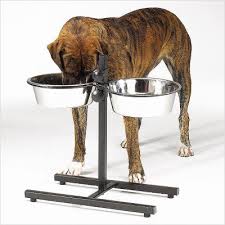 Put Your Dog on a Senior Diet
Put Your Dog on a Senior Diet
A nutritious top quality diet is a major component of your dogs continued, good health. Customize your dogs diet to meet his needs. Chubby dogs need light diets with fewer fats and calories. I prefer feeding all dogs fresh, whole foods and will add glucosamine and chondroiten to their diet for healthy bones and joints. Dogs with disease such as kidney problems require reduced protein diets that are easier for their dog’s bodies to process. Dogs with constipation, a common senior issue, might need a higher fiber diet or supplements, such as oatmeal or wheat bran, to soothe the plumbing. For those that have trouble processing food, feed smaller, more frequent meals.
Do not feed fatty or sugary snacks that lead to obesity or cause digestive distress. Instead, feed balanced dog treats such as lean meat, fruit or vegetable slices, or bake your own healthy, low-fat treats.
Be sure to provide fresh water at all times. I prefer to give my dogs filtered or bottled water. Some seniors have trouble bending down to drink. If so, try elevating the dog bowl.
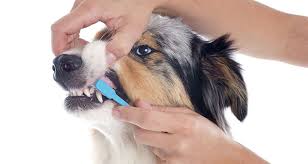 Clean Your Dog’s Teeth
Clean Your Dog’s Teeth
Even if you haven’t been brushing your dog’s teeth daily, it’s never too late to start. Have your vet examine their teeth during the routine check up, and if they need to be scaled schedule a cleaning. Scaling does require anesthesia in most cases which does raise risk in an older dog.
Ask your local Dog Groomer if they offer a service called PlaqueClnz. I offer this service in my salon and it is excellent for senior dogs and those dogs that are at a higher risk of being sedated .You begin by applying a enzymatic spray to the teeth. The longer the product sits on the teeth the more plaque and tartar can be loosened. The product can then be brushed off and much of the tartar can be removed depending on the severity. If the dog will allow, I will scale off the plaque and tartar using a dental tool without sedation. Of course, the dog has to allow you to scale his teeth. You are then sent home with a gel that you apply to your dog’s gums and teeth daily. And it absolutely has to be done on a daily basis to be 1oo% effective. It is the quarter of the cost of a canine cleaning.
You can also supply dental chews if your dog is willing to gnaw on them. Most dogs as they age have a reduced urge to chew, but they can nip boredom in the bud and help strengthen teeth and jaws. Be suspicious of rapid changes in chewing behavior, which can indicate signs of illness, such as gum disease and jawbone disorders.
Plaque, rotting teeth and swollen gums are major problems in older dogs. The unhealthy bacteria found in plaque can spread disease throughout the body, and even damage organs. Dogs are also less likely to eat with sore teeth. This is not a good situation for seniors because they have a tougher time processing the nutrients in their food, and need to eat regular, highly nutritious meals for optimum health. Be wary of brown stained teeth, foul breath, inflamed gums and loose teeth.
 Groom Regularly
Groom Regularly
As dogs age, their skin becomes drier, less pliant and less able to protect them from weather, parasites and infection. At least once a day, brush or comb your dog to improve blood circulation and to distribute the natural oils in your dog’s coat and skin. This will keep it healthier and shinier.
Massaging the skin will improve its suppleness and health. You can add additional skin supporting supplements to your dogs diet such as fatty acids.
Use moisturizing shampoos and conditioners that are PH balanced for dogs. Never use human hair products on your dogs coat. Bathe your dog only when absolutely necessary, bathing dries the skin out and strips out the natural oils. DO NOT bathe your dog every week unless he has a skin condition and you are advised by your veterinarian.
While you are bathing, this is a ideal opportunity for you to examine every part of their body, including their eyes, ears, nose and mouth. Look for swelling, redness, bruising, bumps, bare spots, odors, dry skin and brittle coat and nails. Check your dog for fleas and ticks and treat your dog, yard and home for parasites as well as keeping up on your dog’s heart worm medication.
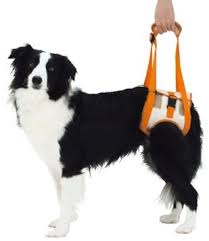 Soothe Achy Joints
Soothe Achy Joints
An older dog naturally becomes more stiff and inflexible as it’s body muscles and joints deteriorate. Watch your dog closely and identify which actions are difficult for it, then take measures to make them easier.
Achy joints can often flare into arthritis. Difficulties standing up, walking on slippery floors, jumping on the couch, climbing stairs or going for a walk, may mean arthritis has set in. You may also notice a stiff gait and lameness, or grouchiness with being touched on the back and hips.
Easing your dog’s discomfort with soft beds, ramps to go upstairs and adequate room temperatures are a few ways to make movement easier for arthritic dogs. Consider providing a heating pad or self warming cushion to warm old joints, especially during cold weather.
The best ways to relieve arthritis pain are providing regular exercise and maintaining a healthy body weight, as well as using prescribed anti-inflammatories, chondroitin and other nutraceuticals and supplements. Newer tools in the battle against arthritis are acupuncture and hydrotherapy. These can both provide benefits, but must be initiated under the care of a veterinarian.
Keep your achy, arthritic dog warm and comfortable with heated, orthopedic beds or therapeutic blankets. If you must go out in the cold weather, if you have a toy or smaller breed you can put a sweater on him. Make getting around the house easier by installing ramps to access the bed, couch and car, and by placing non slip mats on slippery floors.
For advanced arthritis or hip problems, invest in a support sling, harness or rear end cart. Sometimes dog’s can become wobbly on their feet and in their hind quarters, this can indicate muscle weakness or neurological degeneration.
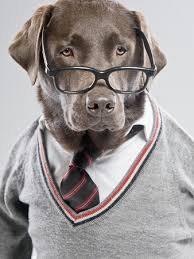 Accommodate Poor Vision and Hearing
Accommodate Poor Vision and Hearing
Hearing and vision tend to diminish as your dog grows older, possibly resulting in blindness or deafness.
Dogs with fading vision may become clumsy or unsure of their footing, especially in strange surroundings. They may also become hesitant when going up and down stairs and going into unknown areas that are poorly lit, especially in the early mornings and evenings.
To compensate, approach your dog noisily so the senior dog with fading vision can hear you coming and won’t be startled. Be sure your home and yard are well lit and install tactile, nasal or oral cues for your dog. For instance, place a drop of fragrance on furniture corners, tack a non slip mat in front of the door, and place noisy collars on other pets.
Remove potential hazards such as loose floor rugs, tuck chairs back under tables, keep your floors clutter free, and block access to pools and spas. Don’t rearrange your furniture or dog bowls, and talk to your dog frequently giving him plenty of love and affection.
Hearing is often the first sense to go. Dog’s won’t respond to commands or will sleep through loud noises. A hard of hearing or deaf dog may:
- Fail to respond to their name, the doorbell or training commands
- Sleep more soundly
- Vocalize more loudly
- Wake with difficulty
- Snap at children and others who approach unexpectedly
You can teach your dog obedience hand commands or how to respond to a vibrating collar. Keep your movements calm and approach from the front.
Your dog’s pupils may develop a harmless, blue haze due to aging. However, a white, opaque haze, bulging eyes, extremely red eyes, colored discharge or squinting can indicate serious problems, which will require a visit to the vet.
 Maintain A Calm, Safe Home
Maintain A Calm, Safe Home
Keep your regular household schedules for feeding, play and exercise. Familiar schedules and surroundings soothe and reassure dogs of all ages.
Seniors commonly become sensitive to loud noises, and may pace and vocalize more. They may also show increased aggression towards people and children, changes in sleeping patterns, and sensitivity to changes in routine or household structure. These may seem small to us, but in the dog’s world it can be huge and very stressful.
Minimize distractions in your home while your senior dog is around. Grand plans such as remodeling your home, rearranging the furniture, buying a new house and entertaining crowds of visitors can wait.
Dog World
